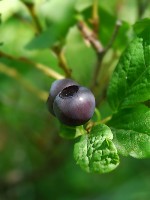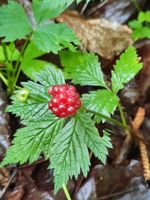Mon-Fri 9am - 5pm Mountain time
Mountain Huckleberry vs Dewberry (Dwarf Raspberry)
Vaccinium membranaceum
Rubus pubescens
NOT AVAILABLE THIS SEASON - MIGHT RETURN
Mountain Huckleberry is a small shrub known for its tart to sweet berries. The berries range from purple-black to red-black, and can be eaten fresh or used in jams and syrups. It is a plant native to Alberta and the berries are frequently enjoyed by both people and wildlife.
In traditional Indigenous fire management practices, berry patches were burned after harvest. This would reduce the invasion of other plants allowing the Mountain Huckleberry to thrive. Its foliage has low flammability and can survive low severity fires, and even if destroyed they regrow from the roots.
Note: Mountain Huckleberry requires specific soil conditions. They need moist, well-drained, acidic soil with a pH around 5.5.
Dewberry (Rubus pubescens) is a native, low-growing perennial that spreads by creeping stems to form a natural groundcover. In spring, it bears small white flowers that attract pollinators, followed by bright red edible berries resembling tiny raspberries. They are an important food source for birds and mammals.
Widespread across Canada, Dewberry serves as a larval host plant for butterflies such as the Spring Azure (Celastrina ladon), adding to its ecological value. It is a suitable choice for naturalization, pollinator gardens, habitat plantings, and ecological restoration projects.

